When we were looking for excellent indie games from home and abroad, we found an action game called STAND-ALONE. Just looking at the video, I feel that this team is very good at making this kind of game. After a few contacts, we learned that this was a three-person team from South Korea, and it was their first time developing a game.
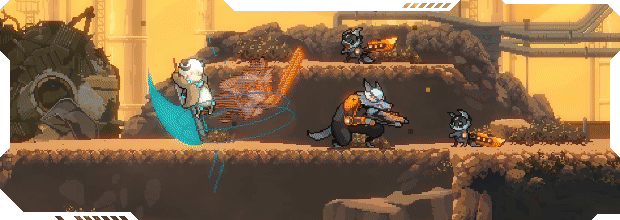
During Steam Next Fest, we tried out the STAND-ALONE demo. Although the content is limited, you can actually experience the excellence of the game. With our curiosity and questions in mind, we caught up with the team to find out what makes them and what makes STAND-ALONE a game different.
You can check the game in Steam: https://store.steampowered.com/app/2226730/STANDALONE/
White Horse:
Would you introduce STAND ALONE to our readers?
LeeDoewoon:
<STAND-ALONE> is an action roguelike game where you can modify skills to create abilities beyond imagination.
The essence of our game lies in the endless organic interactions between skills.
Each randomly acquired skill has its unique characteristics, and the way you use these skills in sequence or enhance them can completely change your combat style.
In extreme cases, it could even allow you to defeat boss monsters in a single hit.
Through these experiences, we aim to create a game that encourages players to ponder over skill modifications and continuously seek out new, unique combinations of skills for the sheer joy of discovery and strategy.
Beside, the story of <STAND-ALONE> is a journey about a shepherd robot that became entangled in deception.In the wake of Dr. Wolf’s devious plot, all the sheep meet a tragic fate, and the robot loses its memory data.
Abandoned in a world turned to ruin, the robot, transformed into a sheep, must fend for itself.
White Horse:
In previous communications you mentioned that you are a small team, but obviously STAND ALONE is not a small project.
Can you tell us about your team and how your team came together and started the development of this game?
LeeDoewoon:
Our team consists of three members, specializing in scenario/game design, programming, and art.
The team first came together during military service, where the programmer and artist met as senior and junior soldiers.
Let me start with my own(LeeDoewoon, the programmer of our team) story.
While serving in the military, a developer from a well-known indie game in Korea joined as my junior.
After seeing my work, he suggested, “Why not try making a game?” marking the beginning of our journey.
Despite having no experience in indie game development and knowing the path would be challenging, we initially thought to create something simple and light.
Watching this process, our artist(Jae), who literally sat next to me during our service, expressed a desire to join, and thus, became part of the team.
After completing our military duties, we embarked on our first indie game development with a rather light-hearted approach.
Although we intended to start with a small project, our game gradually evolved into something much larger.
This wasn’t entirely planned, and there are a few reasons for this shift.
The first reason for the game’s expansion was ironically due to the art worker’s lack of experience with pixel graphics, yet producing high-quality resources.
Despite being new to pixel art, the quality and speed of the work exceeded my expectations, leading us to believe that we could scale the game’s scope.
This prompted us to choose the roguelite genre, anticipating it would efficiently reflect the game’s content evolution and designed systems accordingly.
The image below is a resource we created at the time.
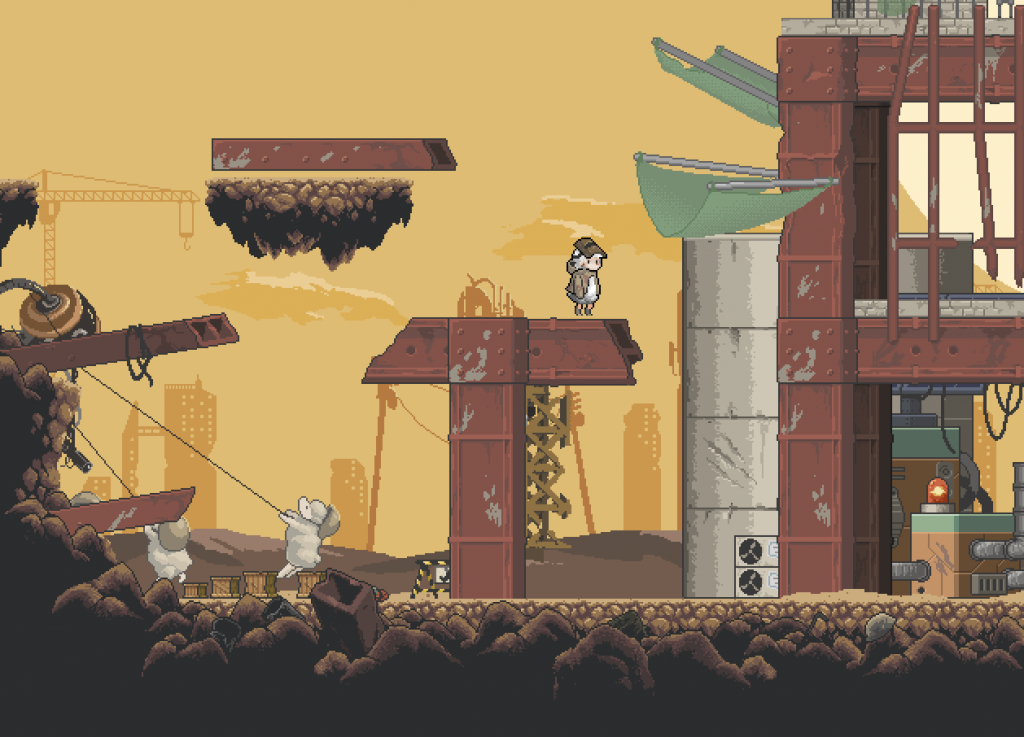
However, a second issue arose.
As development progressed, our skills improved, speeding up the game’s creation. But with this speed came numerous problems.
The lack of clear game design initially extended our production time, and we encountered more work outside our expectations, such as UX and scenario needs.
Managing the expanded scope required focusing on our respective roles in art and programming, but we also had to handle various internal and external tasks, including grant applications and business meetings.
In this situation, we realized the need for additional manpower to complete <STAND-ALONE>.
Fortunately, through connections, we officially welcomed a scenario writer and designer, who had been advising us on the story, into our team.
The new member significantly contributed to detailed designing, scenario wright, translation, and business meetings, stabilizing the team and leading to the current three-person structure of <STAND-ALONE>.
Now, we may not all be experts in every field, but we’ve become a highly efficient team, each member fully capable in their role.
Despite the workload, our exceptional individual skills and teamwork enable us to achieve great efficiency with a small team.
White Horse:
I noticed that there are a lot of details in the combat part, the animations, VFX, Hit Stop, and SE are handled quite well,
can you take a specific action or skill as an example, and talk about how the development team designed and adjusted these contents?
LeeDoewoon:
Ever since I was young, I’ve had a deep love for action games, and through studying programming, I’ve recreated a few 3D action games.
This experience gave me a solid understanding of the basic elements required for a satisfying hit effect, such as knockback and screen shake effects.
From the early stages of development, we were able to create quite impressive actions through detailed work on knockback, screen shake, and VFX.
However, I’d like to introduce a few tasks that significantly enhanced the action feel.
The first major improvement to the action and combat experience was a complete overhaul of the action resources.
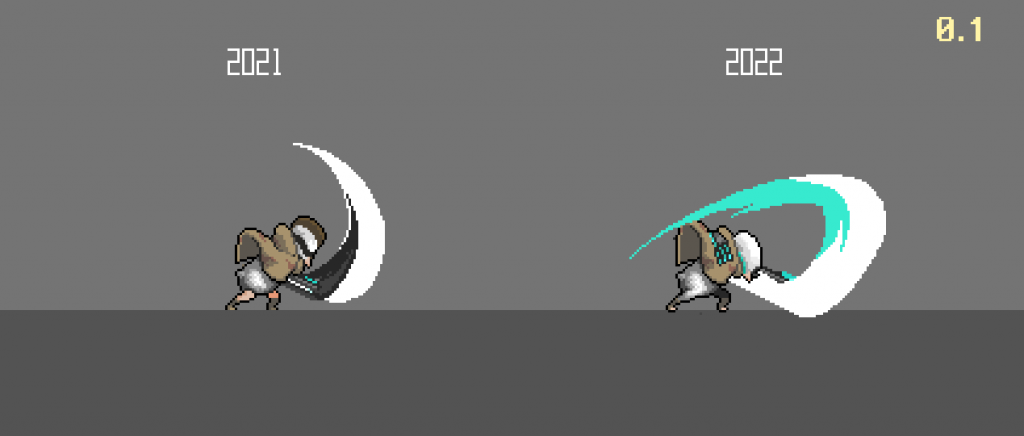
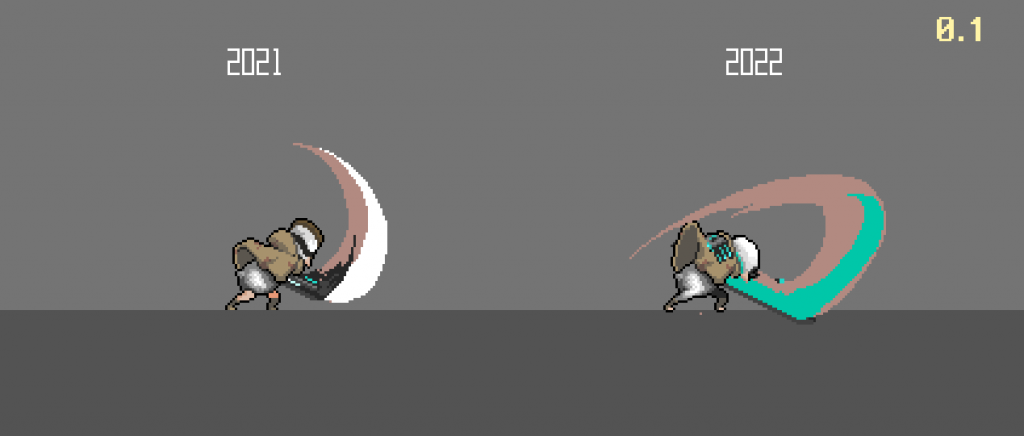
Given that the default weapon was not a light, sharp sword but a massive, heavy greatsword, it was crucial to highlight its characteristics.
To achieve this, we analyzed every element that could visually enhance the combat experience, including visual imagery, numerous frames, and dynamic motions.
We realized that the quality of action resources had a more significant impact than anticipated, leading us to the challenging decision to renew all existing action resources.
It was a massive undertaking, but by increasing the size of the sword and adding detail to the VFX, we significantly improved the visual appeal and clarity of the combat feedback, making the action much more enjoyable visually.
Playing famous action games on the market and distilling the enjoyable experiences to reinterpret them into a 2D side-scrolling action format was also incredibly helpful.
For instance, I had so much fun playing with the greatsword in the <Monster Hunter> series that I wanted to replicate that experience in 2D side-scrolling action.
I recorded gameplay footage and examined it frame by frame to understand the principles of action experience and its regularity.
The image below is a skill actually created after observing <Monster Hunter> at the time.
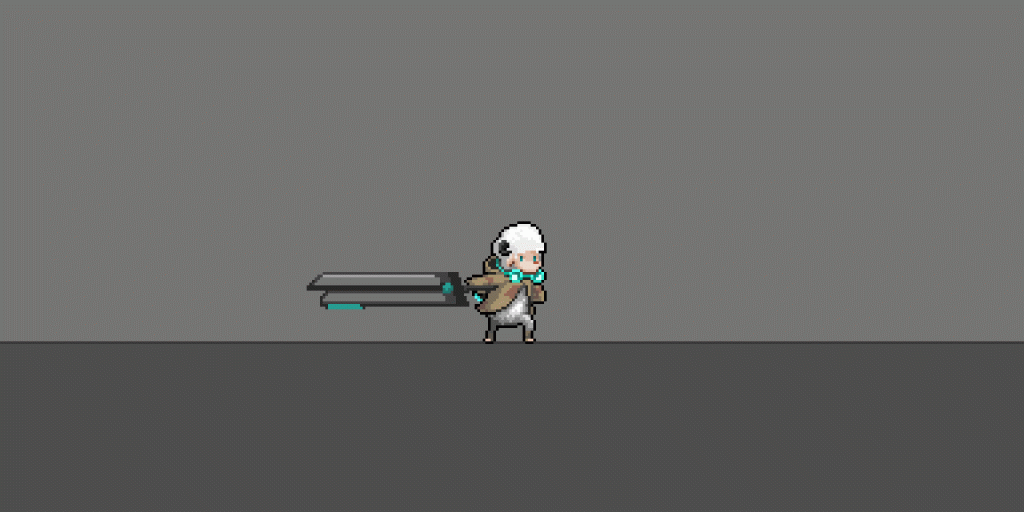
I particularly liked the slight delay in certain actions, so I made an effort to incorporate these details.
In addition to this, we analyzed and discovered various characteristics to add detail, ensuring that the heavy and powerful weapons did not feel slow or bulky.
Another task that significantly influenced the combat experience focused on the visibility of monsters.
Since the combat experience is not solely based on the player character’s actions but also on the interaction with monsters, we kept in mind that clear monster attacks are crucial in action games.
We pondered over various factors, such as the silhouette of monsters, the VFX of enemy attack patterns, and the player’s point of focus during chaotic battle situations.
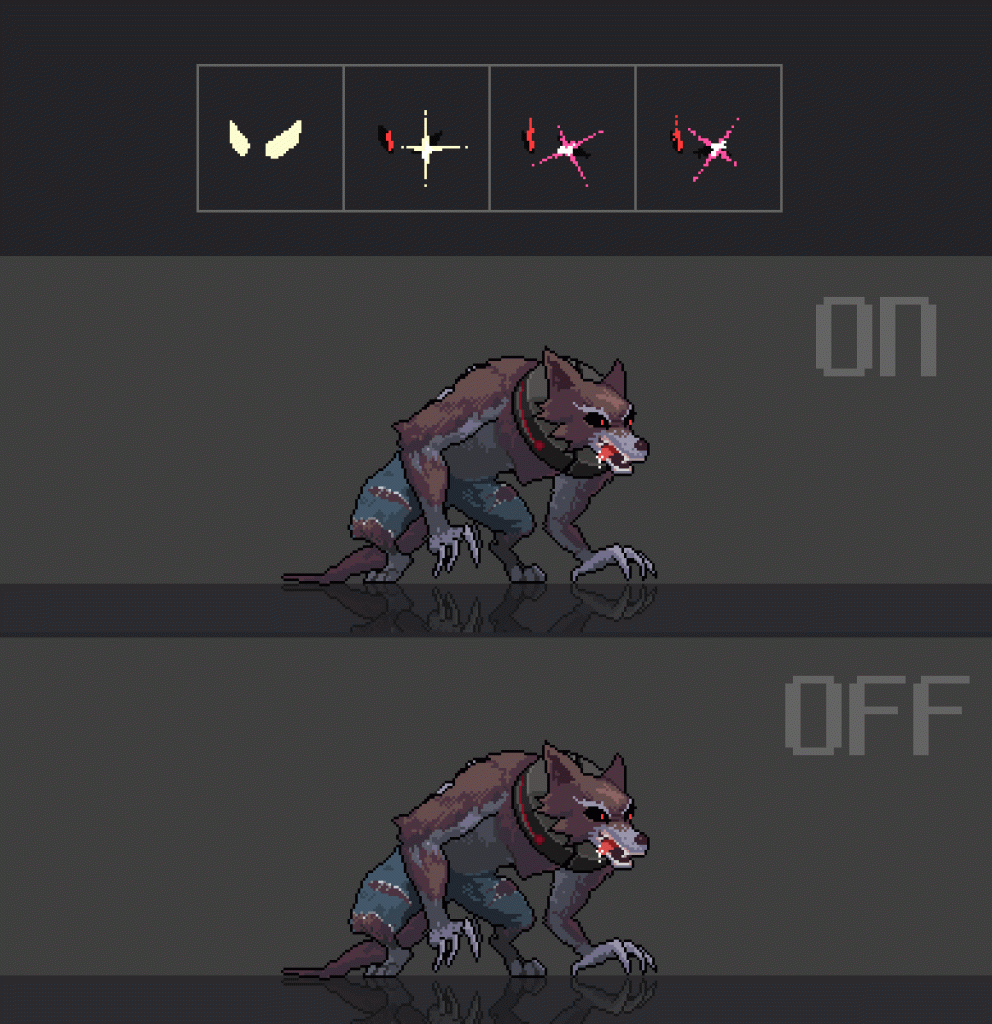
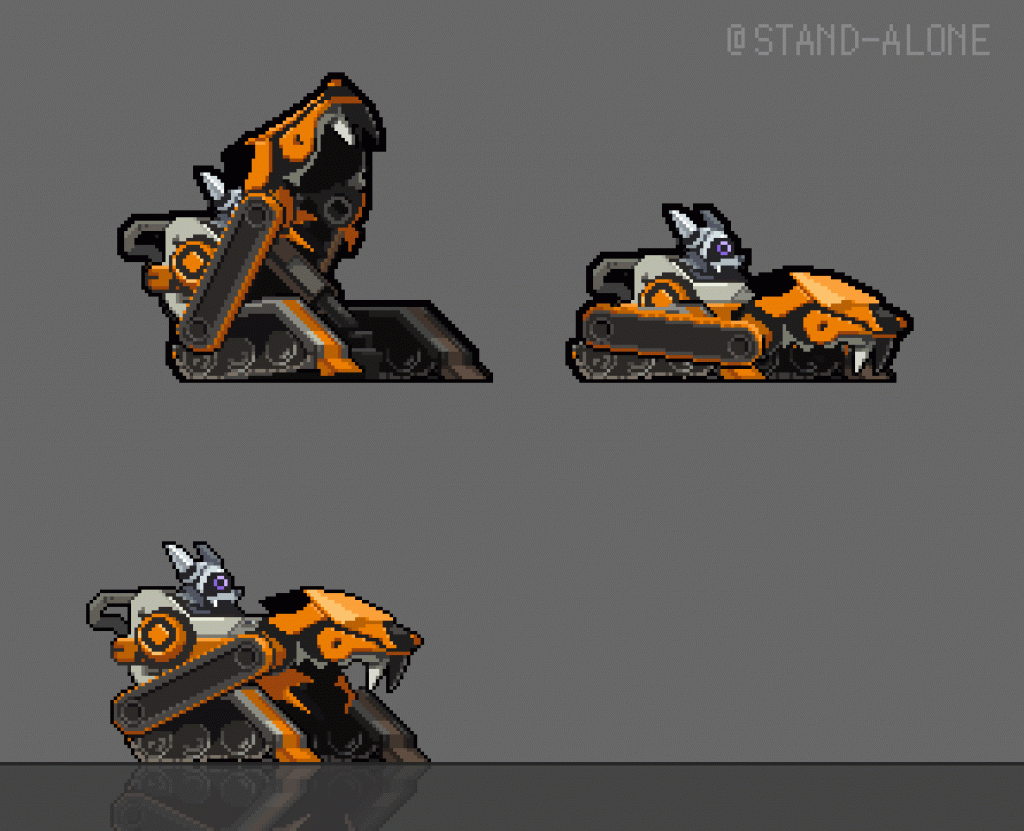
Just as we refined the visual action, it was essential to ensure that the operational fun was also sufficient.
We endeavored to accurately express the interactions for various actions during development.
In particular, creating a variety of player motions and allowing for easy and straightforward adjustments while finely controlling change values was crucial.
Therefore, we developed a dedicated animation tool, enabling detailed movements and nuances to be controlled through various events.
As a result, skills could easily express their unique personalities, and we were able to provide a large number of skills.
We are developing a game that offers rich action by finely adjusting various effects within animations, including the crucial hit feedback, control responsiveness, and various VFX and HitStop effects you mentioned.
One of the elements we consider important for fun is the traces of combat.

Personally, I’m a big fan of <Katana Zero>, playing it deeply and frequently enough to enjoy hard mode speed runs.
I realized from <Katana Zero> that having traces of combat in the place where the fight occurred provides a surprisingly good experience in action games.
Seeing enemies you’ve defeated remain on the battlefield, along with blood splatters from both the enemies and yourself, makes you feel like the sole protagonist standing in that spot after a battle.
Therefore, we have focused on making the feedback and VFX of defeating enemies prominent, ensuring that defeating enemies is satisfying and fun.
However, more important than all of this is actively accepting user feedback.
While it may seem like we meticulously calculated and prepared everything in advance, we have reached this point by continuously improving through the feedback received during the game’s development.
We still have much to learn and are constantly developing and improving!
White Horse:
The map nodes and skill slots in the demo gave me the impression that the team wanted to give the game more depth of gameplay,
but it also meant a lot of work and budget, as well as more development time.
Can you talk about that in your roadmap, what changes are included in the major milestones, and the time of them, and how much content will be included in the final version?
LeeDoewoon:
We are considering an Early Access release for <STAND-ALONE> in 2024.
There are many reasons behind our decision for an Early Access launch, but the most crucial is our desire for player-centric development that grows with the feedback of our players.
Developing content on a timeline is challenging, but we believe that fine-tuning level design is even more difficult.
We think it’s insufficient to rely solely on internal testing; communication with players and adjusting based on their feedback is essential.
The scale of the Early Access version will encompass a total of three stages.
While this might seem short, we aim to deliver a fully satisfying experience with high-quality boss fights, various event maps for narrative depth, and as much content as possible in each stage to ensure the volume feels substantial.
We’ve received many questions about ‘progressive growth elements’.
While these meta-progression related contents are not currently revealed in the demo, they are included in our development plans.
Also, we plan to develop elements for upgrading various weapons.
If we complete the development of all stages, including combat and boss fights, by the first half of this year, we will then proceed with adding numerous skills and items, various events, and a diverse range of weapons.
Before being game developers, all of our team members are gamers themselves.
Therefore, we avoid practices like arbitrarily forcing multiple playthroughs or setting impossible goals just to extend playtime.
Even with an Early Access release, we aim to present a game that does not feel lacking.
We consider the official release to be in the distant future, so we haven’t set a detailed schedule yet.
However, we plan to add substantial content related to the completion of the scenario and the final ending.
If we were to be a bit more ambitious, we have ideas for adding more events and bosses, but these are still at the conceptual stage, so there’s not much to share yet.
What’s certain is that we guarantee to create a game of high quality!
White Horse:
There’s a particular problem. As an indie developer in Korea, can you tell us a little bit about Korean indie games?
How do Korean gamers view indie games? What are the most famous indie games in Korea in recent years?
LeeDoewoon:
While there are many famous indie games, if I were to choose from our genre, titles like <Dungreed>, <Skul: The Hero Slayer>, and <Sannabi> come to mind.
Interestingly, they all use pixel graphics. It makes me wonder if Korean gamers have a particular preference for pixel art, lol.
Especially, <Sannabi>, the most recently released game among those mentioned, is very popular in Korea for its touching story.
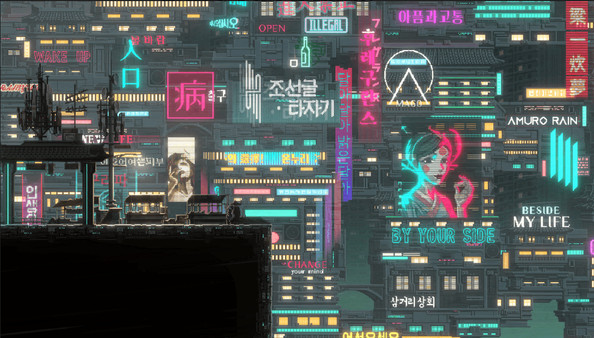
The widespread playing of indie games in Korea hasn’t been a long-standing trend, but in recent years, as the indie game market has grown, it seems that Korean gamers have increasingly embraced indie games.
The market, once dominated by MMORPGs, appears to have gradually shifted towards a preference for lighter, quicker-paced games.
Consequently, it’s my cautious speculation that this trend has contributed to the popularity of easily accessible indie games.